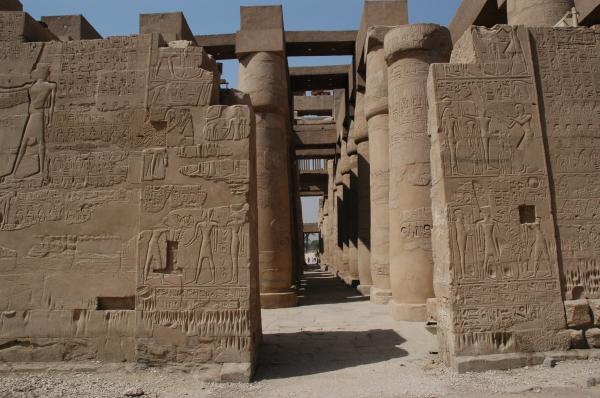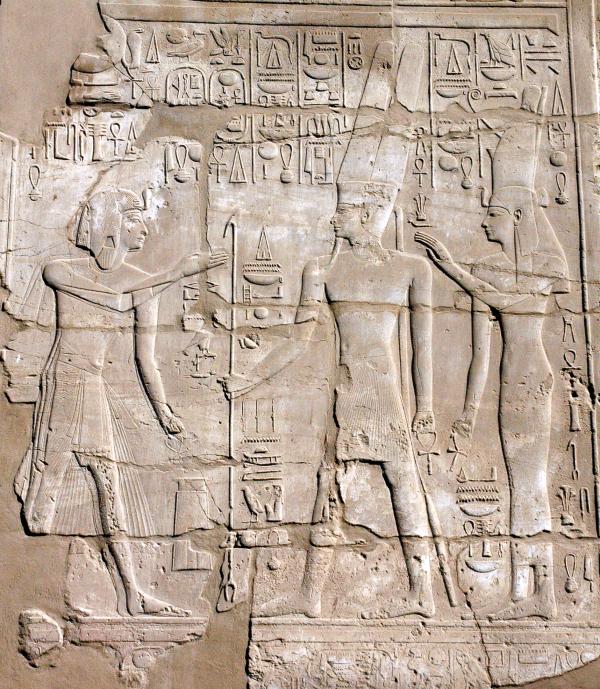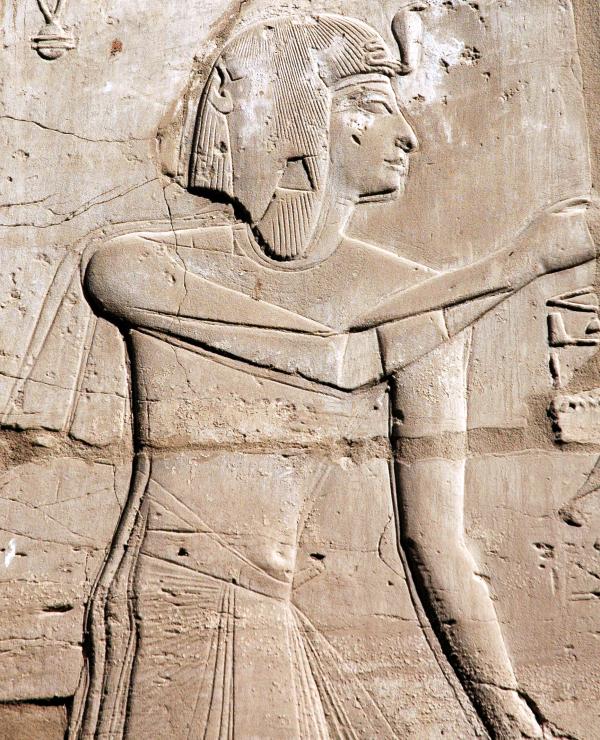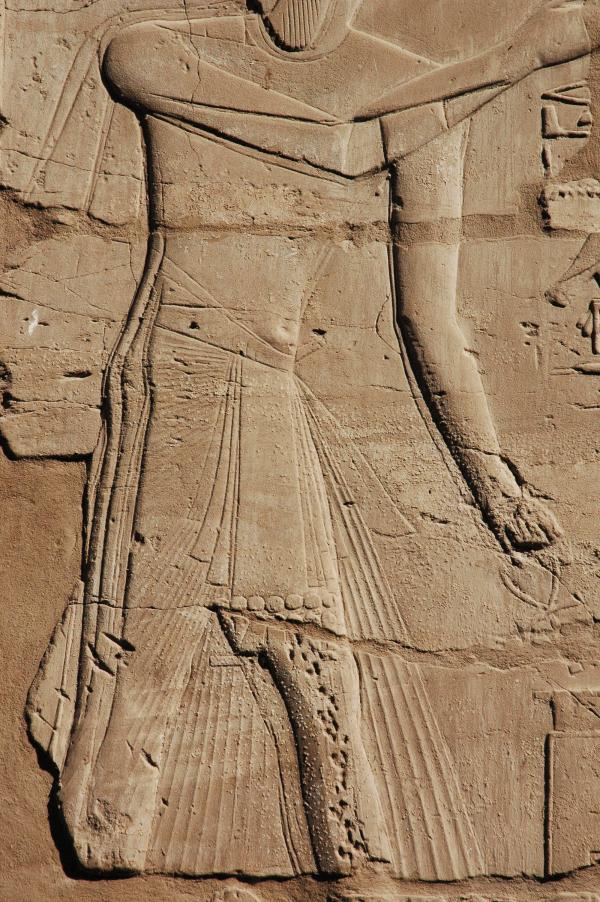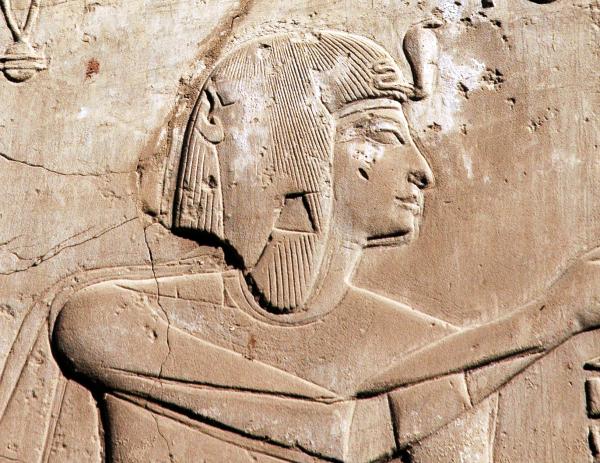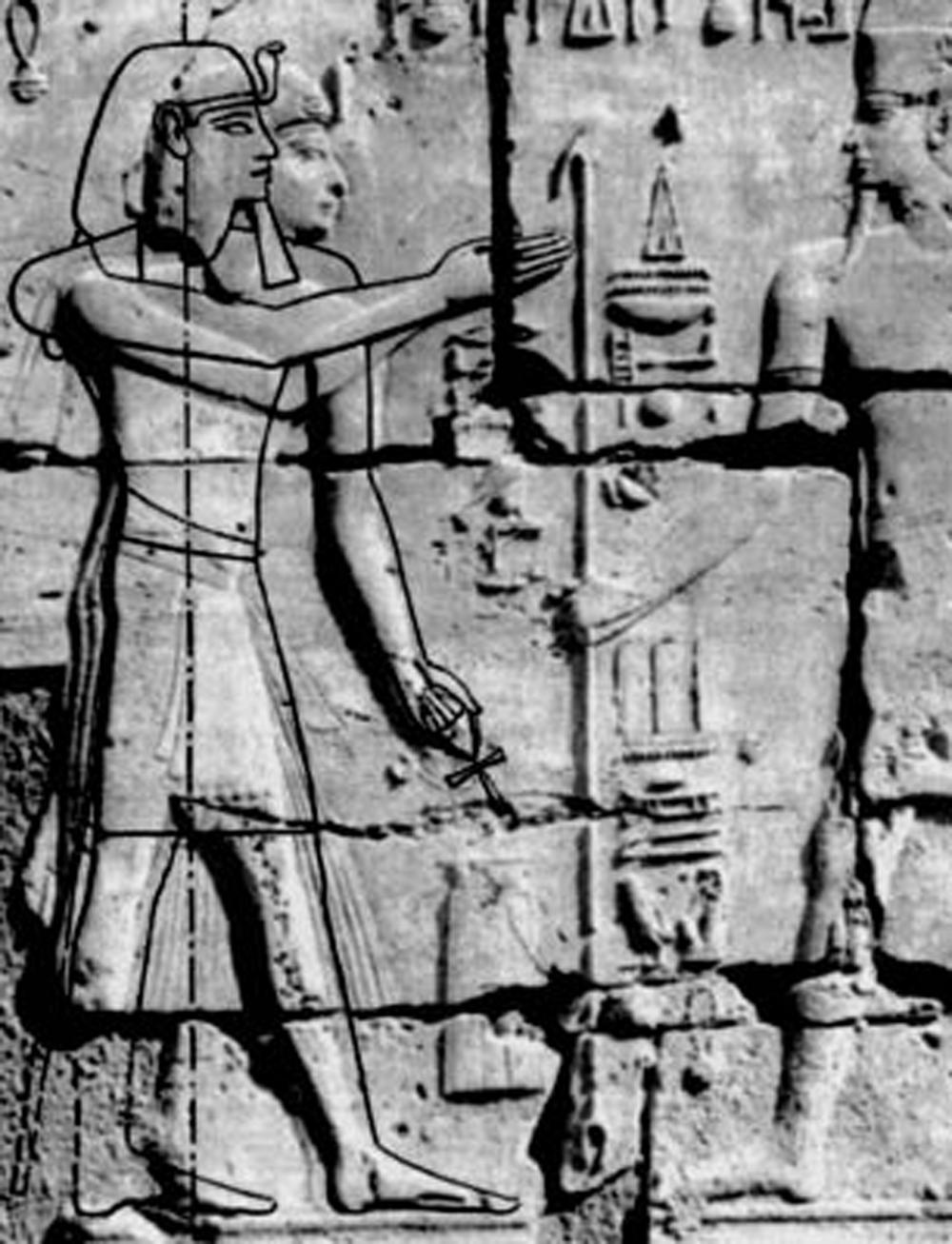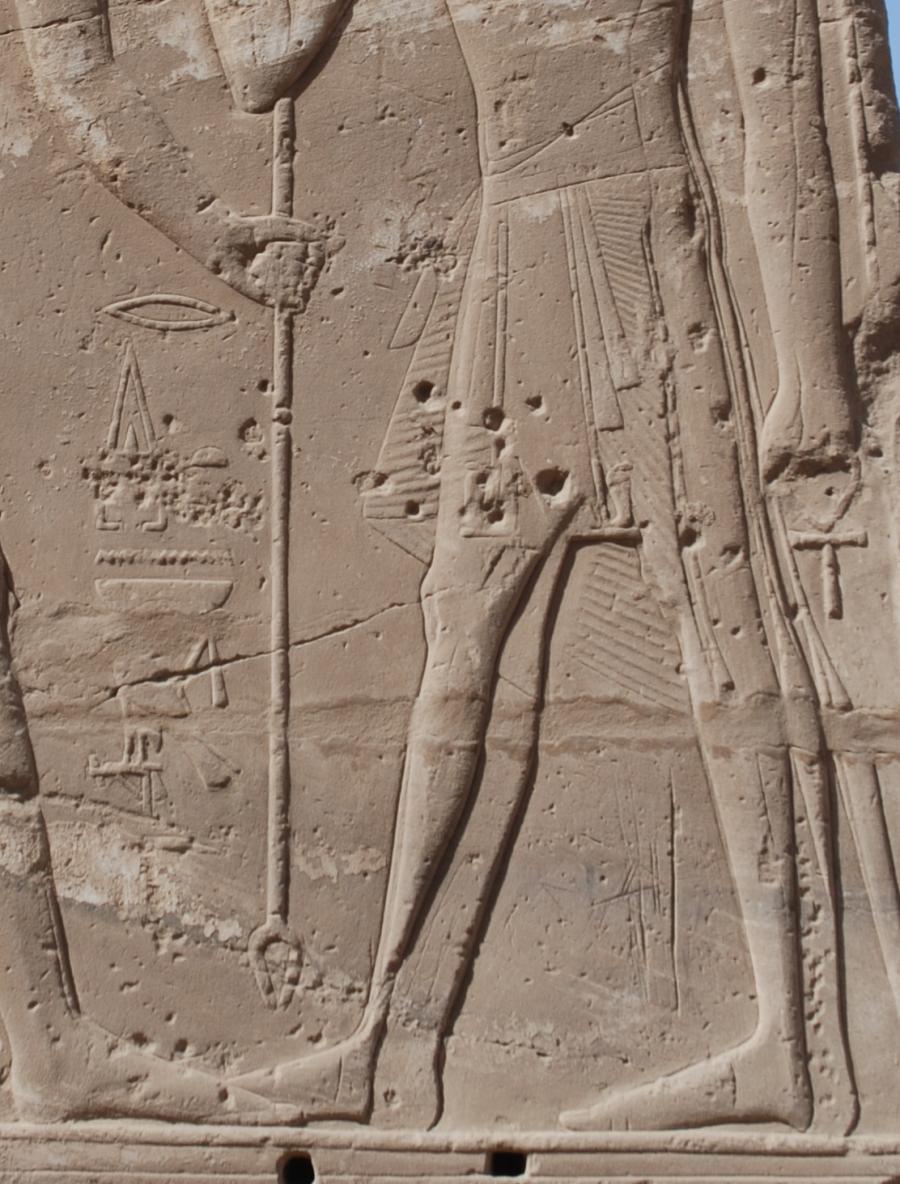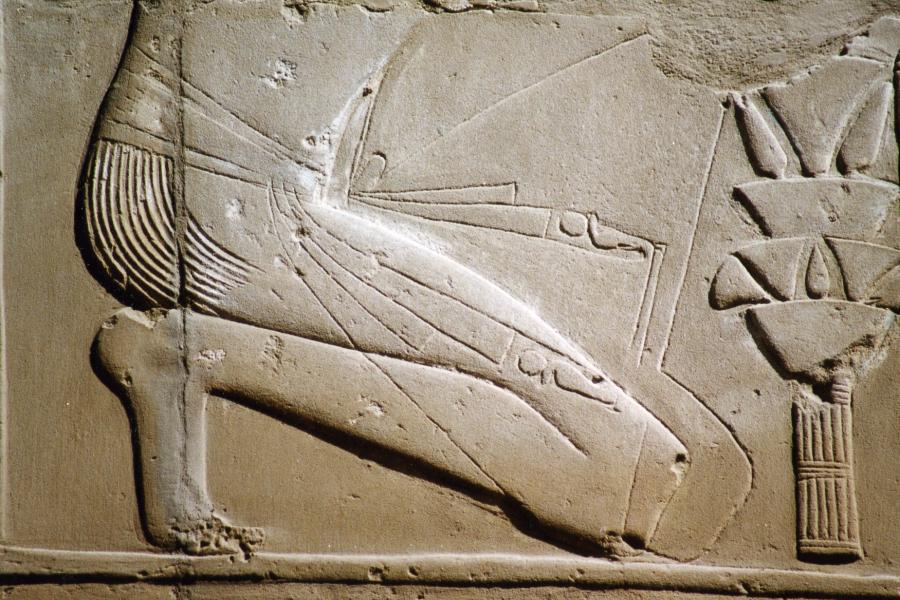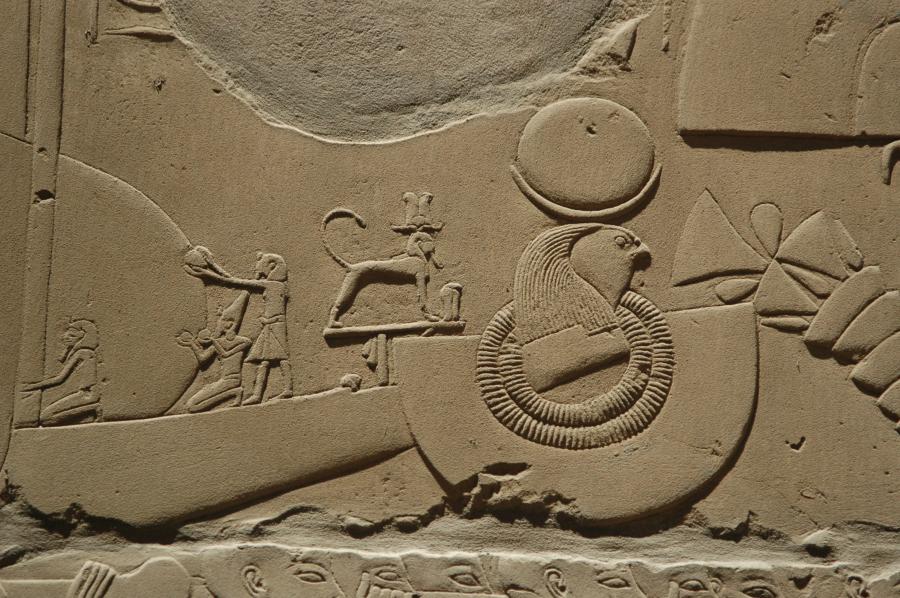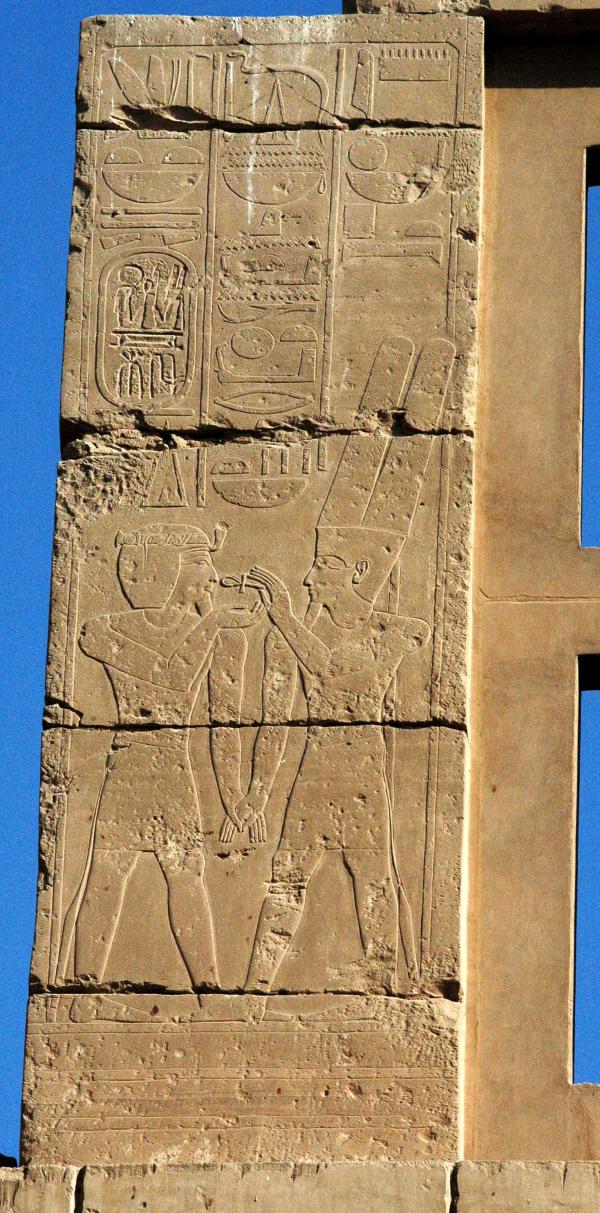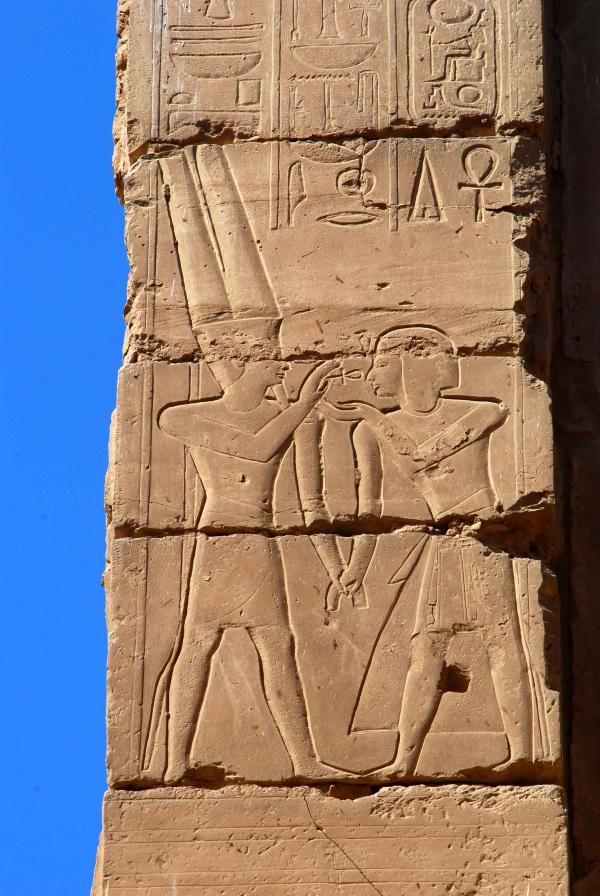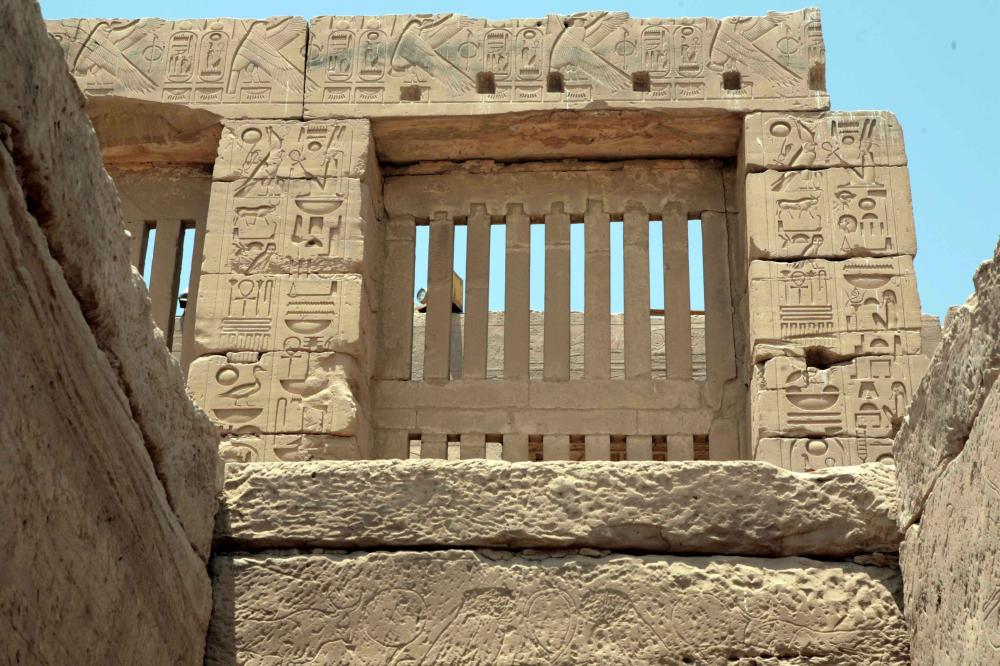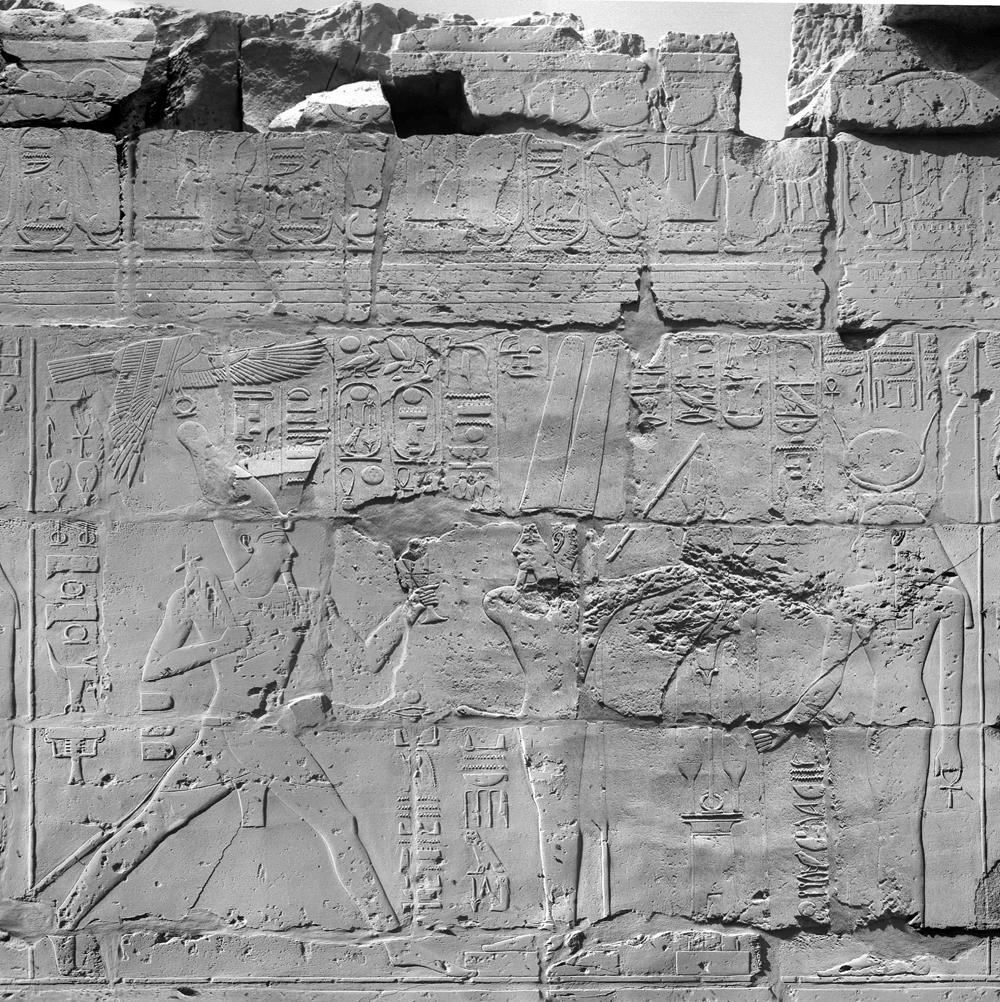The North Gateway & The Building History of the Hall
|
At first glance, the north gateway of the Hypostyle Hall is not very impressive. It is much smaller than the grand entrance through the Second Pylon at the western end of the Hall. The south gateway on the opposite side of the Hypostyle Hall is almost perfectly preserved. The upper half of the north gateway is missing including the lintel. The whole thing looks more like a gap in the north wall than a true gateway. The inscriptions on the gate also seem uninteresting. They are the same as countless other religious scenes on the walls and columns inside the Hall. To most tourists, the gate is most significant as the best way to get to the war scenes of Sety I on the outer side of the north wall. Some surprising discoveries turned up when we examined these inscriptions more closely. More importantly these new findings have given us a better understanding of the history of the whole building.
A closer look at the religious scenes on the doorjambs and passageway of this gate reveals an interesting fact. In most cases, the image of the king in these reliefs has been reworked. This is best seen on the eastern jamb inside the Hall.
Here, Sety I dedicates a model of the temple to Amen-Re and the goddess Mut. It is immediately clear that the king's figure was recarved and adjusted more than once. He seems to have two versions of each foot and three of his thigh and rump. The king's profile was enlarged slightly and there are numerous odd lines running through his upper body and arms.
Strangest of all, Sety I even has a hole in his head! a rectangular depression was carefully cut near the bottom of his wig is, just below where the ear would be if it was not covered by the wig. There are some other curious lines near the back of the wig, and some of the strands of the wig have been erased. How are we to explain all this?
Once all the extra cut lines on Sety I's figure are put together, a completely different image of the king appears. He wore a different crown, the nemes-headdress like the one on Tutankhamen's gold mask. He also had a false beard. Even the "hole" in the head was explained. It was caused by the intersection of his shoulder, neck and beard in the original version. Most important, the king stood straight up in this earlier version. But in the final version and in nearly every other figure of Sety I in the Hypostyle Hall, the king bows towards the gods. This bending is unusual for images of the pharaoh, but is common with Sety. It reflects the excessive piety of this pharaoh. The original figure was radically changed soon after it was completed. The new likeness of Sety bowed to the gods. Once this was done, the artists made several further adjustments until they were satisfied with the proportions.
The same changes to Sety's image are found elsewhere on this gateway. In each case, the pose was adjusted from upright to bowing. In a few cases, there is no sign of reworking, but these figures had been bowing from the start. All these changes might be of some interest, but hardly seem important by themselves. Further investigation of Sety I's reliefs elsewhere in the Hall put these recut images into an important context. Originally,the figures of the king on the north gateway were a mix of those that stood upright and those that bowed and and only the upright ones were altered so that they all bow. In nearly every other wall scene inside the Hall, Sety bows to the gods, but there is no sign of the dramatic adjustments on the north gate elsewhere.
We came to the conclusion that the reliefs on the north gateway were the first ones Sety I had made after construction of the Hypostyle Hall was completed. After the masons and builders left, scaffolding was erected so that draftsmen could outline the designs followed by sculptors that carved them as bas relief. After rendering the king in two different poses on the gateway, the sculptors were ordered to alter their designs so that only the unconventional bowing pose remained. Just to the east of the north gate, other reliefs show minor changes to the proportions of the figure, but nothing as radical as the gateway.
Our working hypothesis was that Sety I intended that he would be shown in a mix of bowing and upright poses in his reliefs. After this plan was executed and then changed on the north gate, the sculptors moved on to the main walls and columns starting just to the east of the gate where they carved the king's figure bowing but still had to make small adjustments to the proportions. Soon, however, they worked out any remaining problems, and the majority of the wall and column scenes of Sety were never recarved. The order of the sculptors' work was (1) the north gateway followed by (2) the wall east of the gate, and (3) the other walls and columns. We soon made one additional discovery that confirmed this theory.
The huge grated windows on the clerestory were held in place by tall piers. The interior surfaces of these piers which faced the main east-west processional way through the nave were decorated with images of Sety I before Amen-Re or Mut. The space was too narrow for a conventional offering scene, so the king stands close to the god, who sometimes embraces him. Nobody had paid much attention to these scenes, which are 24 meters (80 ft) above the ground. They are not very interesting except for one fact. All of the images of Sety I on the northern piers stand fully upright, while all those on the south side are bowing. Ramesses II later placed his name in the cartouches and converted reliefs on the southern aisle into sunk relief. But he made no other changes to Sety I's original design.
The clerestory was inscribed before the rest of the Hypostyle Hall was freed of the earth ramps used to construct it. Being so high above the ground, 24 meters (80 ft) this made better sense than putting up a rickety scaffold. The wide capitals of the 12 great columns would have made it difficult to maneuver the scaffold anyways. The two different poses of Sety I's figure on the clerestory piers confirmed our earlier findings about the order in which the sculptors had worked. It also had important historical significance.
Egyptologists had long argued about the meaning of images of Ramesses I beside Sety I on the west wall of the Hall. Some believed this was evidence that Ramesses I or Horemheb had built the Hall and that Sety I carved some of the reliefs. Perhaps Ramesses I had ruled briefly together with Sety in a coregency. But the chronology of the decoration we have discovered means that the scenes with Ramesses I were actually some of the last to be carved by Sety I before he died, since the clerestory, north gate and north wall were all carved before the west wall. Sety I was therefore honoring his dead father almost a decade after Ramesses I had died. It also meant that Sety I and not Ramesses I or Horemheb, was responsible for building the Hypostyle Hall.
|

